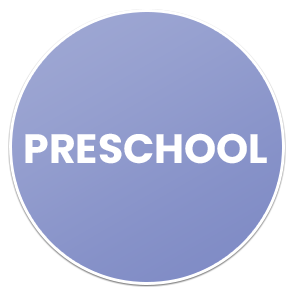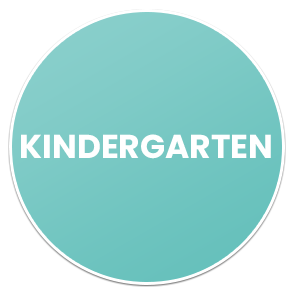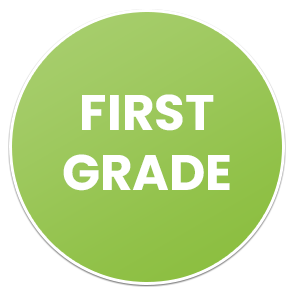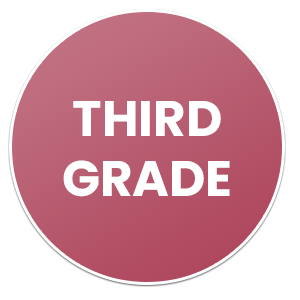Homeschooling by Grade
Homeschooling by Grade
Homeschooling offers a unique opportunity to tailor education to your child’s needs and interests. But with so many options, navigating the world of homeschool subjects by grade can feel overwhelming. Whether you’re just starting out or looking for ways to refresh your approach, understanding how to structure learning experiences is essential.
Imagine crafting an engaging homeschool curriculum by grade that caters not only to academic standards but also ignites your child’s passion for knowledge. The beauty of homeschooling lies in its flexibility; you have the freedom to design a homeschool curriculum schedule by grade that fits seamlessly into your family life. From selecting effective homeschool supplies by grade to curating captivating reading lists tailored specifically for each stage of development or choosing a fully-planned curriculum for their age, every choice shapes a rich educational journey.
Let’s explore how you can optimize your homeschooling by grade experience across different grades while ensuring that learning remains fun and meaningful!


Does Grade Level Matter in Homeschooling?
In homeschooling, the traditional concept of grade levels often takes a backseat. Each child learns at their own pace, which can vary widely even among peers in the same grade. This flexibility allows you to customize lessons that align with your child’s unique developmental stage and interests.
For instance, a child may excel in math but struggle with reading. Rather than forcing them into a rigid curriculum based solely on age, you can adjust subjects according to their strengths and weaknesses.
This approach fosters a love for learning. Children feel empowered when they are not confined by arbitrary grade boundaries. They explore topics that truly captivate them without feeling rushed or held back. Bookshark employs a Levels system rather than grade based upon age for this very reason. Bookshark’s Levels allow you to tailor your curriculum to your child’s interests and abilities, rather than their age. It also allows you to homeschool multiple children at the same time often using the same level with children at different ages.
Focusing on individual progress rather than strict adherence to grades enriches the homeschooling experience for both students and parents alike.
How Do You Organize Homeschool Subjects?
Organizing homeschool subjects can be a creative and flexible process. Start by identifying the core subjects your child needs to cover, such as math, science, language arts, and social studies.
Next, consider the interests of your child. If they love art or music, incorporate these into their daily schedule alongside traditional subjects.
Create a visual schedule that outlines what each day will look like. Use color coding for different subjects to make it visually appealing and easy to follow. You can also choose a fully-planned curriculum that has the days and subjects broken down for you.
Don’t forget about assessments! Incorporate periodic reviews or projects that allow you to gauge progress in various areas.
Adjust as needed. Homeschooling allows for spontaneous changes based on how well your child is grasping concepts or if new interests arise.
How Many Subjects a Day for Homeschool?
When it comes to how many subjects to cover in a day for homeschool, flexibility is key. The ideal number often depends on the child’s age, learning style, and interests.
Younger children may thrive with just two or three subjects daily. This gives them ample time to explore each topic deeply without feeling overwhelmed.
For older students, tackling four or five subjects can be beneficial. This allows you to diversify their education while still keeping sessions manageable.
Don’t forget about breaks! Incorporating short pauses between lessons helps maintain focus and enthusiasm.
Personalize your approach by considering what works best for your family dynamic. Each child learns differently; adapt as needed throughout the year based on engagement and progress. Experimenting with various subject loads can lead you closer to finding that perfect balance unique to your homeschooling journey.
With BookShark’s age-range levels, we move away from the conventional grade system, understanding that kids grow at their own rates. This adaptable approach lets you select a homeschool curriculum that matches your child’s unique growth, allowing them to excel at their own pace. Moreover, BookShark is designed to be used with multiple children of different ages.


How Do I Plan My Homeschool Curriculum?
Science for kindergarteners should be all about exploration and discovery. It’s not about memorizing complex theories, but rather sparking curiosity and a love for learning.
At this age, children can learn basic scientific concepts through hands-on activities like observing nature, conducting simple experiments, and asking questions about the world around them.
Topics like plants, animals, weather, and the five senses are great starting points for introducing young minds to science. Encourage them to use their senses to observe and describe what they see, hear, smell, touch, and taste. BookShark’s Kindergarten Science curriculum is a great resource for introducing these concepts in a fun and engaging way. Our kindergarten science curriculum also includes activities and experiments that can be easily done at home with everyday materials. BookShark’s Kindergarten Science package contain all of the 36 weeks of lessons for your child, including science experiments, books, and a schedule.
Engaging in activities such as planting seeds and watching them grow or exploring the properties of different materials can help build a strong foundation for future scientific knowledge. Remember that at this stage it’s more important to nurture their natural curiosity than to focus on academic achievements.
What Should be Included in a Homeschool Curriculum?
A well-rounded homeschool curriculum should cover essential subjects like math, science, language arts, and social studies. Each subject can be tailored to your child’s interests and learning pace.
Including hands-on activities is crucial. Science experiments or art projects make concepts come alive. Engaging tools enhance understanding.
Don’t overlook life skills in your curriculum. Cooking lessons or budgeting exercises teach practical knowledge that textbooks often miss.
Incorporate reading lists appropriate for their grade level. Diverse genres encourage a love for literature while enhancing comprehension skills.
Consider adding physical education and health topics too. These promote overall well-being alongside academic growth.
Remember to integrate technology into your lesson plans. Online resources can offer interactive experiences that enrich traditional teaching methods.


How Do You Homeschool Different Grades?
Homeschooling multiple grades can feel overwhelming, but it’s entirely manageable with the right approach. First, assess each child’s strengths and weaknesses. Tailoring lessons to their individual needs can foster a love for learning.
Create a flexible schedule that accommodates different subjects for various grades. Consider block scheduling; dedicate specific blocks of time to core subjects like math or science while allowing kids to work independently on other tasks.
Utilize mixed-age resources such as group projects or family read-alouds. This allows siblings to engage together while learning at their respective levels.
Don’t forget about online platforms and community resources! These tools often provide grade-specific material, making it easier to stay organized without reinventing the wheel every day.
Maintain open communication with your children about what they’re enjoying or struggling with in their studies. Their feedback will be invaluable as you continue customizing your homeschool experience.
How Do I Homeschool in My State?
Homeschooling laws vary significantly from state to state. It’s crucial to understand the regulations that apply where you live.
Begin by researching your state’s education department website for specific guidelines on homeschooling requirements. Some states have strict registration processes, while others are more relaxed.
Once familiar with the laws, consider joining a local homeschool group or co-op. These communities can provide valuable resources and support.
Don’t forget about curriculum options; some states require certain subjects to be taught. Look into various programs that align with those requirements and fit your educational philosophy. While homeschooling by grade level is a good starting point, finding the right curriculum for you and your child will ensure a successful learning experience.
Keep records of your child’s progress as many states ask for documentation like attendance logs and samples of work throughout the year. This will help ensure compliance while also tracking your child’s learning journey effectively. For the most up-to-date information see your state’s Department of Education

By providing a solid foundation in key subjects like math, science, language arts, and more, you can help set your kindergartener up for academic success in the years ahead. Embrace the flexibility of homeschooling to personalize your child’s education and make the most of this formative time together. Enjoy watching your little one grow and thrive as they explore new concepts and develop important skills through a well-rounded kindergarten homeschool curriculum tailored just for them.










